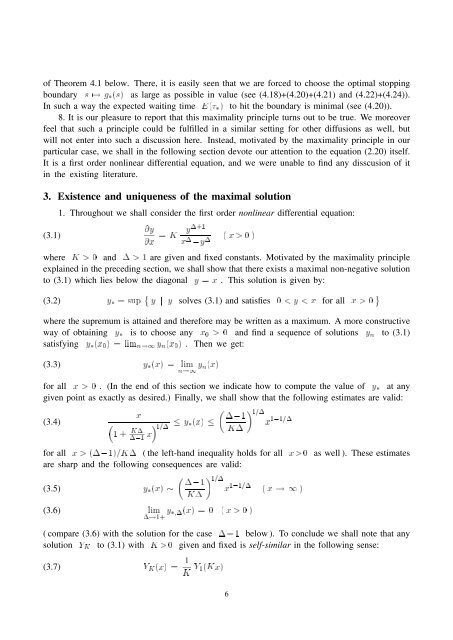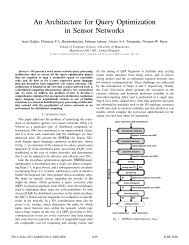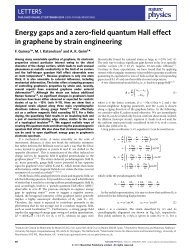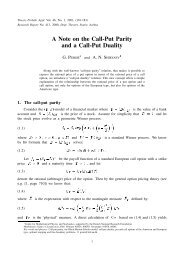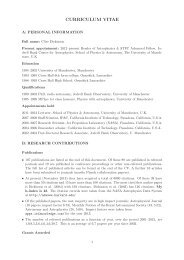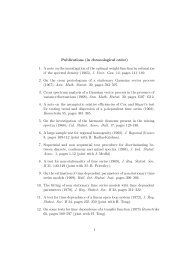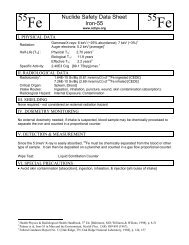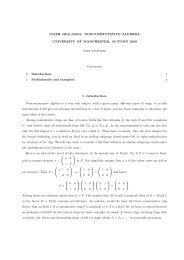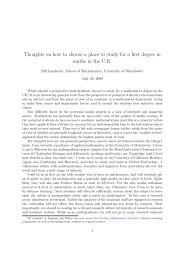inequality for geometric Brownian motion
inequality for geometric Brownian motion
inequality for geometric Brownian motion
You also want an ePaper? Increase the reach of your titles
YUMPU automatically turns print PDFs into web optimized ePapers that Google loves.
of Theorem 4.1 below. There, it is easily seen that we are <strong>for</strong>ced to choose the optimal stoppingboundary s 7! g3(s) as large as possible in value (see (4.18)+(4.20)+(4.21) and (4.22)+(4.24)).In such a way the expected waiting time E(3) to hit the boundary is minimal (see (4.20)).8. It is our pleasure to report that this maximality principle turns out to be true. We moreoverfeel that such a principle could be fulfilled in a similar setting <strong>for</strong> other diffusions as well, butwill not enter into such a discussion here. Instead, motivated by the maximality principle in ourparticular case, we shall in the following section devote our attention to the equation (2.20) itself.It is a first order nonlinear differential equation, and we were unable to find any disscusion of itin the existing literature.3. Existence and uniqueness of the maximal solution(3.1)1. Throughout we shall consider the first order nonlinear differential equation:@y@x = K y1+1x 1 0y 1 ( x > 0 )where K > 0 and 1 > 1 are given and fixed constants. Motivated by the maximality principleexplained in the preceding section, we shall show that there exists a maximal non-negative solutionto (3.1) which lies below the diagonal y = x . This solution is given by:(3.2) y3 = sup8 y j y solves (3.1) and satisfies 0 < y < x <strong>for</strong> all x > 09where the supremum is attained and there<strong>for</strong>e may be written as a maximum. A more constructiveway of obtaining y3 is to choose any x 0 > 0 and find a sequence of solutions y n to (3.1)satisfying y3(x 0 ) = lim n!1 y n (x 0 ) . Then we get:(3.3) y3(x) = limn!1 y n(x)<strong>for</strong> all x > 0 . (In the end of this section we indicate how to compute the value of y3 at anygiven point as exactly as desired.) Finally, we shall show that the following estimates are valid:(3.4) x1 +101 K11=1 y 1013(x) x K11=1x 101=1<strong>for</strong> all x > (101)=K1 ( the left-hand <strong>inequality</strong> holds <strong>for</strong> all x>0 as well ). These estimatesare sharp and the following consequences are valid: 1=1101(3.5) y3(x) x 101=1 ( x ! 1 )K1(3.6) lim1!1+ y 3;1(x) = 0 ( x > 0 )( compare (3.6) with the solution <strong>for</strong> the case 1=1 below ). To conclude we shall note that anysolution Y K to (3.1) with K > 0 given and fixed is self-similar in the following sense:(3.7) Y K (x) = 1 K Y 1(Kx)6


